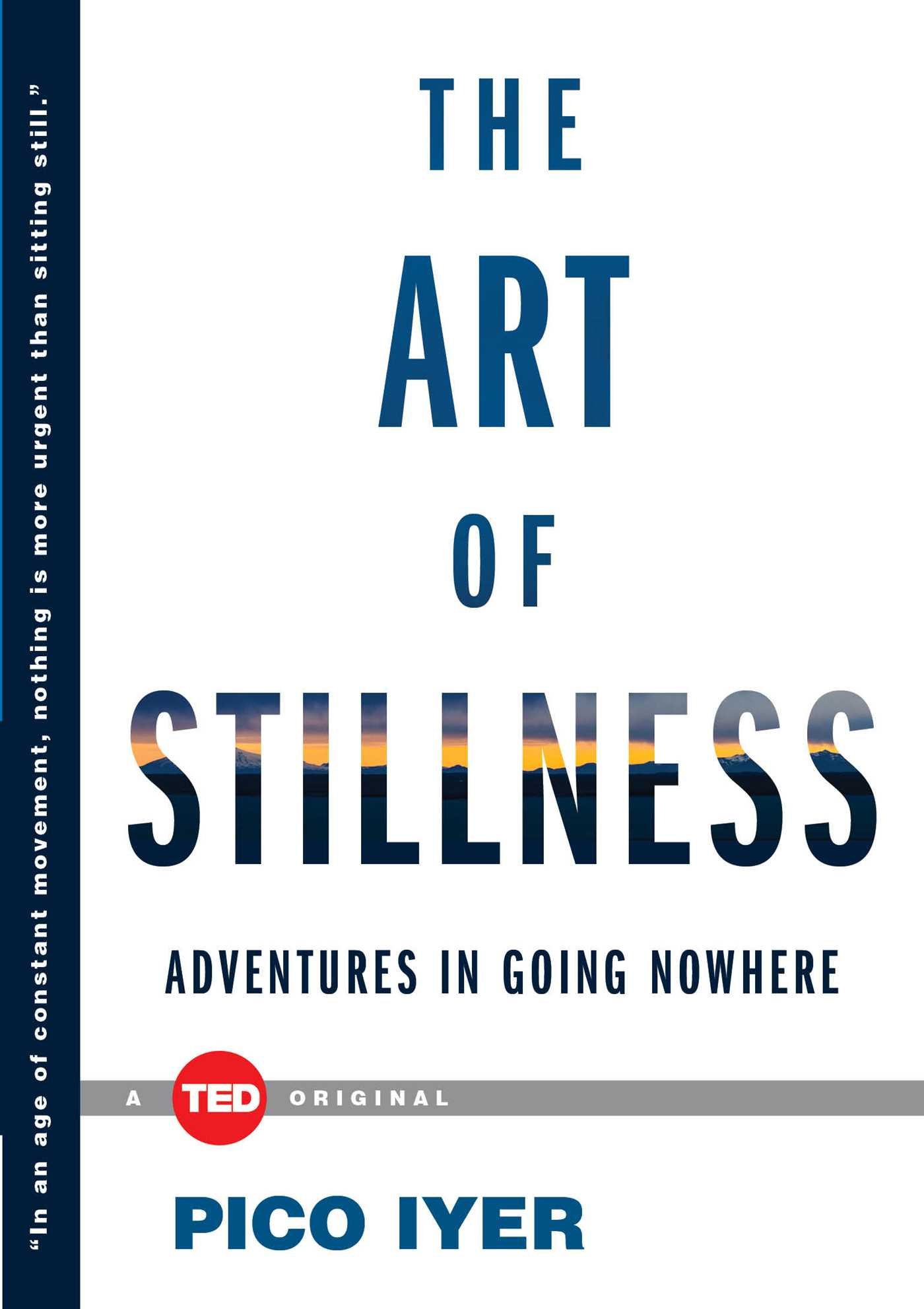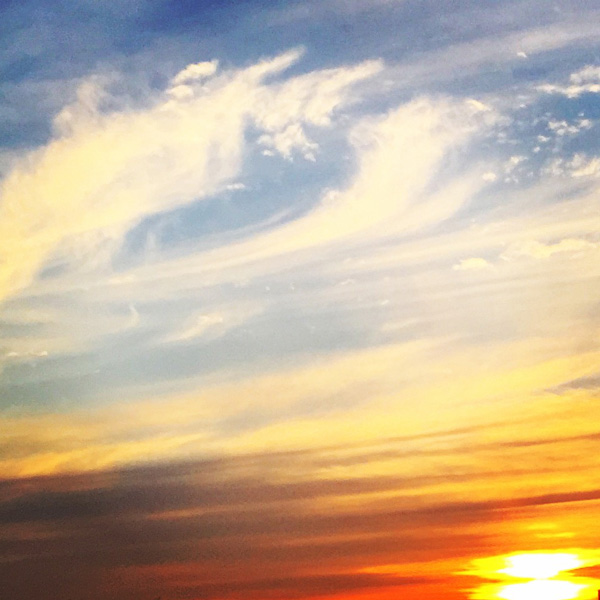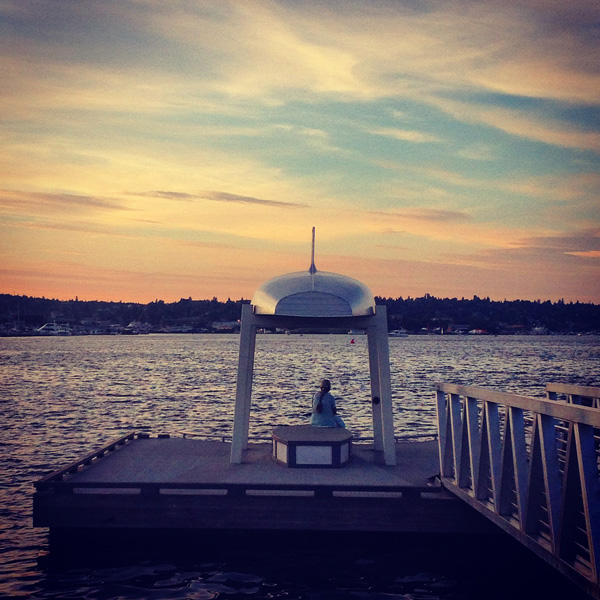Living with Parkinson's Disease: Poetry,Photography, Art, Skiing, Dancing, Animal Rescue, Wild Animal Conservation; Other Interests
Wednesday, November 26, 2014
La Detente
La Detente from Not To Scale on Vimeo.
Pierre & Bertrand dedicated their spare time over 4 years to create this epic 3D film. The film tells the story of a French soldier in World War I, who becomes paralyzed with fear while in the trenches. He escapes in his head to an imaginary world where toys fight wars instead of humans. It won many awards and was shown at Cannes film festival 2011.
Tuesday, November 25, 2014
Saving Harry
Wildlife Aid's 'Saving Harry' from Kris Hofmann on Vimeo.
Magical paw prints guide Harry the hedgehog out of suburbia and back into the wild.
.
.
Since the 1950s the number of hedgehogs in Britain has fallen from 30 million to 1 million.
We could be faced with possible urban extinction of the much cherished little animal by 2025.
We could be faced with possible urban extinction of the much cherished little animal by 2025.
If you liked the film and want to help our beloved hedgehogs, please consider making a donation
wildlifeaid.org.uk
wildlifeaid.org.uk
The featured track 'I'm Seeing Stars' is available on iTunes, with all proceeds going to Wildlife Aid's Saving Harry campaign
itunes.apple.com/gb/album/im-seeing-stars/id865517884?i=865517892&ign-mpt=uo%3D4
itunes.apple.com/gb/album/im-seeing-stars/id865517884?i=865517892&ign-mpt=uo%3D4
Directed by Kris Hofmann
with illustrations by Sandra Dieckmann
with illustrations by Sandra Dieckmann
Model Maker/ Joe James
Puppeteer/ Amber Donovan
Puppeteer/ Amber Donovan
The Art of Richard Thompson
The Art of Richard Thompson from GVI on Vimeo.
Richard Thompson has been called a “cartoonists’ cartoonist.” Find out why in this warm and moving portrait.
Monday, November 24, 2014
The Art of Plating
Chef's Cut: The Art of Kaiseki with Niki Nakayama from The Art of Plating on Vimeo.
Here's Niki Nakayama, chef-owner of LA kaiseki restaurant n/naka, plating a selection of poetic dishes from her 13-course tasting menu and intimately explaining what kaiseki means to her.
Sunday, November 23, 2014
Light Motif
Light Motif from Frédéric Bonpapa on Vimeo.
Prix Ars Electronica 2014, Honorary Mention.
Official Selection at Siggraph Asia 2014, Anima Mundi, Encounters, Giffoni Experience, OIAF / LAIKA's salon des refusés, Animatou, Message to Man, Multivision, Tous Courts / Motion +, Giraf, Future Shorts, ArtFutura 2014...
Official Selection at Siggraph Asia 2014, Anima Mundi, Encounters, Giffoni Experience, OIAF / LAIKA's salon des refusés, Animatou, Message to Man, Multivision, Tous Courts / Motion +, Giraf, Future Shorts, ArtFutura 2014...
Light Motif is conceived as a synaesthetic experience based on a visual transposition of Music for 18 Musicians – Section II, by the American composer Steve Reich. The ambition of the film is to cinematically capture the extraordinary life force that animates this essential work of contemporary music by offering a truly hypnotic experience where music can be “seen”.
The inspiration for the project stems from the relationship between music and the visual arts, illustrated by artists such as Wassily Kandinsky, Oskar Fischinger, Norman McLaren or John Whitney. These works try to establish precise connections between sounds, shapes, colors and movements, to visually translate the concepts of rhythm, melody, harmony, pitch, timbre and intensity. Light Motif proposes applying the construction principles of Steve Reich’s compositions to visual language.
Rigorously architected, his compositions are based on the repetition of short melodic patterns subjected to the gradual processes of dephasing, lengthening pattern, rhythmic saturation and tonal changes. The result of these subtle variations in the repetitions is a sound texture in constant transformation. The listener passes progressively from a polyphonic perception to a global perception, from the perception of a discontinuous sound phenomenon to a continuous one. In Light Motif it is this perceptual phenomenon that is transcribed into images.
Procedural generation techniques are used to transpose the motifs and compositional processes into a semi-abstract visual form made of colored lights and geometric shapes.
Light Motif explores the possibilities of synergy between music and image through a subjective experience that can speak directly to the subconscious of the viewer.
The inspiration for the project stems from the relationship between music and the visual arts, illustrated by artists such as Wassily Kandinsky, Oskar Fischinger, Norman McLaren or John Whitney. These works try to establish precise connections between sounds, shapes, colors and movements, to visually translate the concepts of rhythm, melody, harmony, pitch, timbre and intensity. Light Motif proposes applying the construction principles of Steve Reich’s compositions to visual language.
Rigorously architected, his compositions are based on the repetition of short melodic patterns subjected to the gradual processes of dephasing, lengthening pattern, rhythmic saturation and tonal changes. The result of these subtle variations in the repetitions is a sound texture in constant transformation. The listener passes progressively from a polyphonic perception to a global perception, from the perception of a discontinuous sound phenomenon to a continuous one. In Light Motif it is this perceptual phenomenon that is transcribed into images.
Procedural generation techniques are used to transpose the motifs and compositional processes into a semi-abstract visual form made of colored lights and geometric shapes.
Light Motif explores the possibilities of synergy between music and image through a subjective experience that can speak directly to the subconscious of the viewer.
Producer / Director / Editor / CG Supervisor: Frédéric Bonpapa
Music: Steve Reich - Music for 18 Musicians, Section II. Performed by Steve Reich and Musicians. Used by permission of Boosey & Hawkes UK Ltd.
Character Modeler: Eric Prebende
Character TD: Frédéric Bonpapa
Character Animators: Barthélémy Boirot, Frédéric Bonpapa, Mathilde Fabry, Romain Pamart
FX Animators: Olivier Barré, Frédéric Bonpapa, Jon Uriarte.
Shading / Lighting TD: Frédéric Bonpapa
Compositors: Frédéric Bonpapa, Jon Uriarte
Music: Steve Reich - Music for 18 Musicians, Section II. Performed by Steve Reich and Musicians. Used by permission of Boosey & Hawkes UK Ltd.
Character Modeler: Eric Prebende
Character TD: Frédéric Bonpapa
Character Animators: Barthélémy Boirot, Frédéric Bonpapa, Mathilde Fabry, Romain Pamart
FX Animators: Olivier Barré, Frédéric Bonpapa, Jon Uriarte.
Shading / Lighting TD: Frédéric Bonpapa
Compositors: Frédéric Bonpapa, Jon Uriarte
© 2014 Frédéric Bonpapa
A Tax on Bunny Rabbits
A Tax on Bunny Rabbits from Nathaniel Akin on Vimeo.
"A Tax on Bunny Rabbits" premiered at the 2011 Ottawa International Animation Festival. This short film is all text animation, ascii style! No bunnies were harmed in the making of this film. See more of my work at oxen.tv and riotsquad.tv
Festivals & stuff:
2011 Ottawa International Animation Festival (premiere)
2011 Cutout Fest Queretaro Mexico
2012 Reel 2 Real Festival Youth Jury Most Innovative Film Award!
2012 Nashville International Film Festival
2012 Scratch Film Festival
2012 London International Animation Festival
2012 Film Leben Festival Berlin
2012 Festival Off-courts Trouville
2012 Anibar International Animation Fest Kosovo
2012 Seoul International Extreme Short Image & Film Festival
2012 Going Underground Subway Festival Seoul & Berlin
2011 Ottawa International Animation Festival (premiere)
2011 Cutout Fest Queretaro Mexico
2012 Reel 2 Real Festival Youth Jury Most Innovative Film Award!
2012 Nashville International Film Festival
2012 Scratch Film Festival
2012 London International Animation Festival
2012 Film Leben Festival Berlin
2012 Festival Off-courts Trouville
2012 Anibar International Animation Fest Kosovo
2012 Seoul International Extreme Short Image & Film Festival
2012 Going Underground Subway Festival Seoul & Berlin
Friday, November 21, 2014
Art Belongs to Everyone
Let The Arts Roam from I Am Los Angeles on Vimeo.
Wherever they go, they try to make something that makes sense for the neighborhood, and the community. And they always make something positive, something the artists hope people can enjoy -- regardless of whether life has greeted them with great fortune. Armed with a vision and their cans of spray paint, El Mac and Retna will transform a forgotten wall into a piece of art.
El Mac and Retna are street artists, born in LA. They use building walls as blank canvases for their imagery, and the duo has collaborated to create murals all over the world. El Mac and Renta have very different styles, and have been collaborating the last few years. They combine their artistic forces in a specific way: El Mac creates huge lifelike portraits and Retna, calligraphic brushwork and decoration. The result is striking imagery that is unique and recognizable as theirs. It's not uncommon for street art fans and documentarians to gather to watch the progression of an El Mac and Retna work in progress.
El Mac and Retna art feels appropriate for the street because the artists themselves embrace the city streets, the different neighborhoods, and the blend of cultures and backgrounds of the people that fill them. Street art, including the work of El Mac and Retna, also reflects a new attitude about accessibility to art in our environments. "Why not see all the walls painted," says Retna. "Let the Arts Roam!"
Created by Joris Debeij & Terence Loos. Music by The Pilots
jorisdebeij.com - terenceloos.com - thepilots.nl
jorisdebeij.com - terenceloos.com - thepilots.nl
more portraits @ iamlosangeles.com
Wednesday, November 19, 2014
Monday, November 17, 2014
"Inspire and Make Them Laugh...."
Charlie Chicken, Canine Artist - [Short Documentary] from Ed David on Vimeo.
Charlie Chicken is a world-renowned canine artist. Originally from Puerto Rico, he works out of Brooklyn, NY, where his art has been featured in MOMA, the Louvre, and the Getty. This is his story.
TRT: 3 min. [Official selection] Puppy Pound International Film Festival.
Shot on the new Sony FS7 with leica-r 50 and 24mm 3-cam lenses.
Camera provided by my friend Bart McNeil at Omega Broadcast. I love these guys. Bart is very handsome and has a love for enchiladas!omegabroadcast.com
Camera provided by my friend Bart McNeil at Omega Broadcast. I love these guys. Bart is very handsome and has a love for enchiladas!omegabroadcast.com
Director/Editor/Colorist/Screenwriter/Voiceover: ED DAVID kittyguerrilla.com
Camera Operators: ADAM WELZ, ED DAVID, JOHN LARSON adamwelz.net
Concept by: LILY HENDERSON + ED DAVID lilyfranceshenderson.com
Special thanks to: LILY HENDERSON + FRIENDS. Bart McNeil at Omega Broadcast. And of course AARF for letting us to adopt Charlie!!arfhamptons.org/ PLEASE ADOPT A RESCUE! There are so many of them that need homes!
Executive Producer: LARS VON TRIER
Camera Operators: ADAM WELZ, ED DAVID, JOHN LARSON adamwelz.net
Concept by: LILY HENDERSON + ED DAVID lilyfranceshenderson.com
Special thanks to: LILY HENDERSON + FRIENDS. Bart McNeil at Omega Broadcast. And of course AARF for letting us to adopt Charlie!!arfhamptons.org/ PLEASE ADOPT A RESCUE! There are so many of them that need homes!
Executive Producer: LARS VON TRIER
The film was fun to make - it was an idea Lily and I had floating in our heads for a while. So many short doc portraits of artists that take themselves very seriously. Not this one. No way. Wait, maybe a little.
Flux
F L U X from candas sisman on Vimeo.
F L U X
A Short Animation Inspired by the Works of İlhan Koman - Candaş Şişman’s video dedicated to famous sculptor İlhan Koman produced for the exhibition İlhan Koman: Hulda Festival, a Journey into Art and Science held September, 2010.
İlhan Koman’s unique design approach in his form studies also inspires contemporary art works. The video installation Flux by young artist Candaş Şişman can be defined as a digital animation which is inspired from the structural features of some of İlhan Koman’s works like Pi, 3D Moebius, Whirlpool and To Infinity... A red circle, which is colored in reference to the red radiators of Ogre, is traced in a morphological transformation which re-interprets the formal approach of Koman’s works. The continuous movement sometimes connotes the formal characteristics of Pi, 3D Moebius, Whirlpool and To Infinity..., as well as the original formal interpretations of the design principles of the works . In Flux, Koman’s design process in the making of the Pi series has been treated as the emerging of a sphere from a two-dimensional circle by the principle of increasing the surface; and that simple direction is re-interpreted in digital medium. Thanks to this, in the digital animation an entirely different form serial that does not resemble Pi yet remaining its design principle can be followed through the flow of a circle to the sphere. As a conscious attitude of the artist, this work is not designed in a direct visual analogy with Koman’s works. During the animation, none of the moments of the transforming form look like Pi or 3D Moebius, however the subjective reading of Koman’s approach can be observed.
With the integration of the sounds of various materials – which Koman used in his sculptures – Flux turns into an impressive spatial experience. Flux, also exemplifies that Koman’s work can be re-interpreted by the analysis and manipulation of form in the digital medium.
Sunday, November 16, 2014
Pen Farthing - 2014 CNN Hero Candidate
Pen Farthing: Reuniting soldiers with dogs they left behind
By Meghan Dunn, CNN
updated 10:36 PM EST, Mon November 3, 2014
STORY HIGHLIGHTS
- Pen Farthing, a former Royal Marine sergeant, founded Nowzad Dogs
- The nonprofit reunites stray dogs and cats with soldiers who took them in during combat
- Farthing started the organization after adopting Nowzad, a stray dog, in Afghanistan
- Voting for 'CNN Hero of the Year' continues through Thursday, Nov. 16
Editor's note: Pen Farthing has been named a 2014 Top 10 CNN Hero. Voting for CNN Hero of the Year continues through Sunday, Nov. 16). All of this year's Top 10 CNN Heroes will be honored during CNN Heroes: An All-Star Tribute" -- Sunday, December 7 (8pm ET) on the global networks on CNN.
(CNN) -- Staff Sgt. Edwin Caba served in Afghanistan for nearly three years. Like his fellow soldiers, he longed for a sense of normalcy during his tours.
"We'd spend hours not sleeping, and rushing to eat meals, and staying on guard," said Caba, 26.
When a litter of puppies was born on the base where Caba served, the animals provided just the relief he needed.
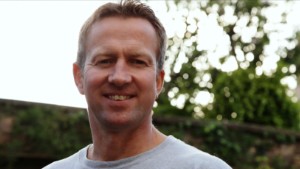
Pen Farthing's group has reunited nearly 700 soldiers with stray animal buddies in Afghanistan.
"You walk in, and the dogs are wagging their tails, jumping on your legs and so excited to see you," Caba said. "You forget that you're halfway across the world, in a desert, with hostile things going on."
The soldiers began feeding, bathing and caring for the puppies, and Caba bonded with one in particular.
"She was sleeping on her back, with her mouth wide open, her tongue out a little bit and it was such a dopey thing to do -- and it's just like me," said Caba, who named the dog Cadence. "So I kind of knew that was it for me."
But a few months later, the soldiers' tour was coming to an end. Determined not to leave the dogs behind, they searched for a way to get them to America.
That's when Caba was connected with Nowzad Dogs. Since 2007, the organization has reunited hundreds of soldiers with the stray dogs and cats they rescued while serving on the front lines.
"On every single street corner in Kabul you will find stray dogs," said Pen Farthing, a former Royal Marine sergeant who founded the nonprofit. "To be able to get that animal home to them, it closes the loop. ... They don't want to just abandon that animal."
Soldier's best friend
Farthing knows firsthand the bond that can form between a soldier and a dog. In 2006, while on patrol in Afghanistan, he and his troop encountered a dog fight.
"We broke up that dog fight not realizing that one of those dogs was actually going to adopt me," said Farthing, 45.
The dog followed Farthing back to base. They became friends, and Farthing named him Nowzad, after the town where he saved him.
"He was just war-torn and battered, just like the town we were actually fighting over," he said.
For several months, Farthing and Nowzad filled an important void in each other's lives.

Farthing relaxes with Nowzad in Afghanistan's Helmand province in 2006.
"As the troop sergeant, I was there to motivate the guys and get them fired up again to go out and do the job. ... But no one was doing that for me," Farthing said. "My time with this dog was a way of de-stressing, collecting my thoughts and popping my head back in the game."
After his tour ended, Farthing went through a difficult process to get Nowzad home to Britain. He realized he not only wanted to help other soldiers do the same, he wanted to do more to help Afghanistan.
"One day you are fighting the Taliban, and the next day you are home and grocery shopping," Farthing said. "When I got home, I thought, 'What am I doing here?' I didn't want to leave Afghanistan forever."
Today, Nowzad Dogs also works to promote animal welfare in the country.
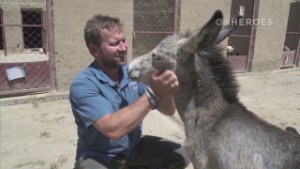 CNN Heroes: Nowzad Dogs
CNN Heroes: Nowzad Dogs
The group's shelter and clinic in Kabul are staffed by 14 Afghan nationals, four of whom are trained veterinarians. The group spays/neuters street dogs and cats and vaccinates them against rabies to reduce the stray animal population. In turn, those efforts help protect residents by having fewer rabid animals roaming the streets.
Farthing said his organization has the only official animal shelter in Afghanistan. The group also places rescued animals in caring homes there.
Journey to a new home
Farthing's group has reunited animals with nearly 700 service members from eight countries.
Soldiers' dogs and cats are first brought to the shelter in Kabul, where kennel manager and former British soldier Louise Hastie begins the quarantine process. All animals are spayed/neutered, vaccinated and micro-chipped. They spend two to three months at the shelter before being transported to the soldier's home country.
My connection with Afghanistan stayed alive because of Nowzad.
Pen Farthing, founder of Nowzad Dogs
Pen Farthing, founder of Nowzad Dogs
Last year, Caba and fellow soldiers were reunited in New York with the puppies for which they had cared.
"When I pulled Cadence out of the crate at (the airport), I was just so excited. I was even more excited that she remembered me," Caba said. "It kind of brought me back to coming back after a mission and having her there. It brought me right back to that feeling."
Nowzad lived with Farthing in Britain for the last six years until the dog's recent death. For Farthing, he was a constant reminder of their journey.
"My connection with Afghanistan stayed alive because of Nowzad," Farthing said. "So for me, every time I look at him, it just makes me smile. I could never have dreamed that we'd be doing something like this in Afghanistan."
Want to get involved? Check out the Nowzad Dogs' website at www.nowzad.org and see how to help. CNN
CNN Hero of the Year - One Candidate
Patricia Kelly: Cowgirl uses horses to motivate at-risk kids
By Marissa Calhoun, CNN
updated 10:39 PM EST, Mon November 3, 2014
STORY HIGHLIGHTS
- Patricia Kelly's nonprofit teaches children horseback riding and animal science
- Ebony Horsewomen gives at-risk youths an alternative to the streets
- Kelly: "We use horses as a hook to create pride, esteem and healing"
- Voting for 'CNN Hero of the Year' continues through Thursday, Nov. 16
Editor's note: Patricia Kelly has been named a 2014 Top 10 CNN Hero. Voting for CNN Hero of the Year continues through Sunday, Nov. 16). All of this year's Top 10 CNN Heroes will be honored during CNN Heroes: An All-Star Tribute" -- Sunday, December 7 (8pm ET) on the global networks on CNN.
Hartford, Connecticut (CNN) -- Fred Wright may have grown up on Garden Street, but his early childhood was far from rosy.
"It's tough growing up here," said Wright of his low-income neighborhood in Hartford, Connecticut. "There's a lot of negative influences. ... It's easy to take the wrong path."

Patricia Kelly is an equestrian and former Marine.
Raised by a single mother, Wright struggled with behavioral issues and was forced to transfer schools several times. He ultimately reached a point where he felt like he had nothing to live for.
"I was walking around with a lot on my shoulders," he said. "I couldn't handle it. I didn't care about life anymore."
But all that started to change when Wright met Patricia Kelly.
"I was 7 years old when I met Mrs. Kelly. ... I wasn't used to strictness. I wasn't used to hearing the word 'no,'" said Wright, now 17.
Kelly, a former Marine and an equestrian, took Wright under her wing and helped him find hope in an unlikely place: on a horse.
"Fred was like a round peg everybody kept trying to squeeze into a square hole," Kelly said. "He was hurting. He needed a place he could express himself. The (riding) arena became that place for him."
For the last 30 years, Kelly has helped children in Hartford stay on the right track through her nonprofit, Ebony Horsewomen. The program offers horseback riding lessons and teaches animal science to more than 300 young people a year.
"We use horses as a hook to create pride, esteem and healing," said Kelly, 66. "They learn that they have ability. They just have to unlock it."
Closing 'the gap'
Connecticut ranks fourth among the wealthiest states in America, according to the Census Bureau. But it also has one of the nation's largest income gaps between rich and poor.
Kelly, who has lived in Hartford most of her life, witnessed the effects of that inequality on the youth.
"It is a divided city; the children in the poorer neighborhoods have less resources," Kelly said.
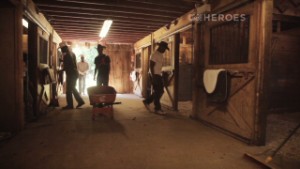 CNN Heroes: Cowboy Chores
CNN Heroes: Cowboy Chores
By exposing those children to horsemanship, Kelly aims to give them an alternative to the streets and an opportunity to turn their lives around.
"When you teach a child to ride a horse, they learn they are the center of their environment," said Kelly, whose program reaches children from age 5 to 19. "Once they make that connection, they can change what happens in school, at home and in the community."
The group's equestrian and agricultural center is nestled inside a 693-acre park. Complete with a horse stable, riding arena and an ice cream parlor, it's a far cry from the dilapidated homes and boarded up school buildings that lie just beyond its gates.
Kelly's equestrian fleet includes 14 horses and a Shetland pony. Also on the farm are chickens, rabbits, fish, birds and turtles, all of which have been bred by the children who have made this urban oasis their home away from home.
When you teach a child to ride a horse, they learn they are the center of their environment. Once they make that connection, they can change what happens in school, at home and in the community.
Patricia Kelly
Patricia Kelly
A brotherhood on horseback
Among the programs offered by Kelly's group is its unique Junior Mounted Patrol, in which participants serve as park rangers.
"We're the eyes and ears of the park," said Wright, who is the lieutenant of the all-boys group.
Led by older male mentors, the special unit is comprised of boys as young as 8, who meet each Sunday for a day full of activities. They tend to the barn and horses, take riding lessons and participate in wellness workshops. The older boys in the group ride out on patrol through the park.
"The guys have seen quite a number of things," Kelly said. "They have seen drug deals. They've seen fighting. They've seen sexual acts. They've seen dumping. ... If they see these kinds of things, they report it back in and we turn it over to the police."
In the case of young men like Wright, the nonprofit has been a critical part of their development.
"I can't tell you where I would be without this program. It changed my life. It's helped me set goals for myself," said Wright, who has dreams of becoming an equine blacksmith and dentist. He hopes to attend Cornell University after he graduates high school next year.
For Kelly, stories like Wright's serve as a testament to nature's healing powers.
"Children should have light in their eyes. The light signifies hope," Kelly said. "When they come here, we can begin to turn the light back on."
Want to get involved? Check out the Ebony Horsewomen website atwww.ebonyhorsewomen.us and see how to help.
A Book Review - "The Art of Stillness" by Pico Ayer
|
Subscribe to:
Posts (Atom)
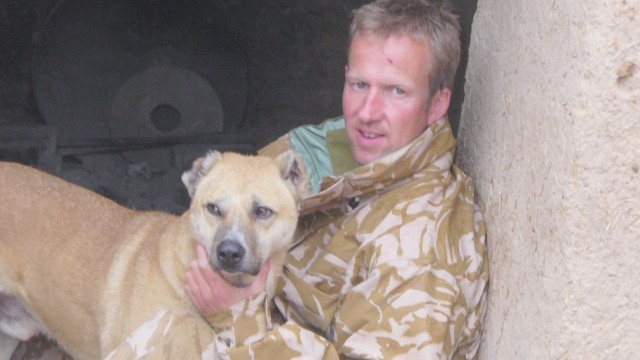


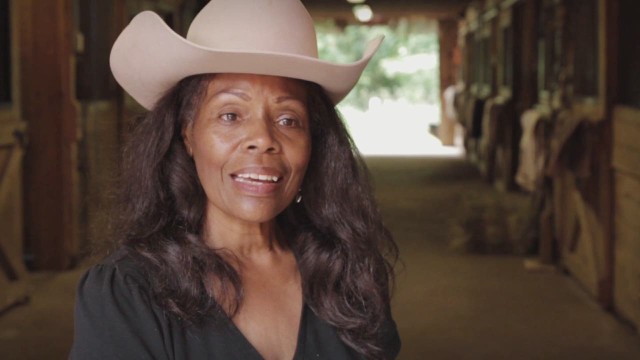

 Hey Maria! If you missed last week's edition – why "psychological androgyny" is key to creativity, Bruce Springsteen's favorite books, the elusive art of inner wholeness, Neruda's life as an illustrated love letter to language, and more – you can catch up
Hey Maria! If you missed last week's edition – why "psychological androgyny" is key to creativity, Bruce Springsteen's favorite books, the elusive art of inner wholeness, Neruda's life as an illustrated love letter to language, and more – you can catch up 